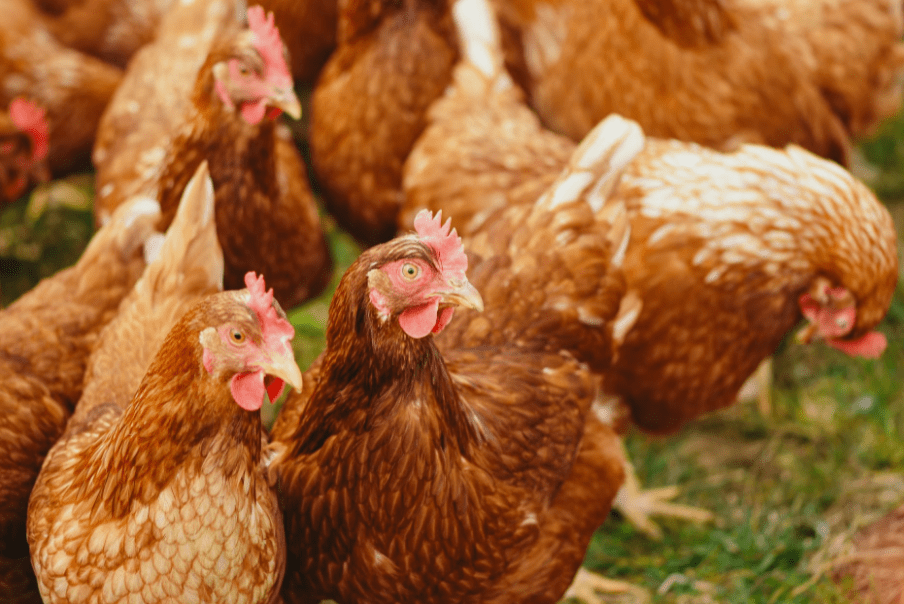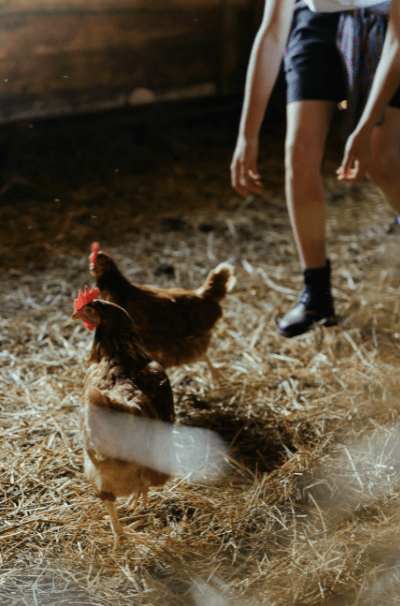It can be hard to take care of chickens in winter, especially for smallholders who don’t have access to the facilities available in poultry farms for chickens. Chickens are susceptible to weather fluctuations; if laying hens are not kept warm in winters, they tend to stop producing eggs. Moreover, it is hard for chickens to recover in winter if they get sick, which is why it is essential to take proper care of them in winters.
Most chicken farmers use heaters (heat lamps) to keep chickens warm in winters. However, these lamps can cause fire and be a severe threat to the chickens’ safety.
Here is a list of things chicken farmers can do to take care of chickens during winters:
1. Keep the Coop Ventilated
The coop should be closed and ventilated at the same time. You cannot let the cold air enter the coop, neither can you leave it unventilated. Moreover, you have to keep the airflow adequate for the chickens. Extremely less airflow can cause ammonia build-up in the coop and other serious problems. To avoid these things, chicken farmers should make sure that the ventilation is good.
Plant vents should face towards the coop’s roof so that cold air cannot hit the birds directly. With the help of vents, the warm and damp air will leave the coop, and cold and dry air from the outside will keep the humidity balanced. This way, mold wouldn’t grow in both the coop and chicken’s bedding.
Every mesh vent has a hatch that can be opened and closed; through this hatch, farmers can control the ventilation of the coop by opening it in the morning and closing it at night or during rain.
2. Do Not Use Heat Lamps in the Coop
Heat lamps are too risky to use in a coop because there is always risk of fire. This is why heat lamps shouldn’t be used in coops. Cold-tolerated chicken breeds can withstand cold weather, as the normal temperature of a chicken’s body is 106°F.
Moreover, chickens have a protective layer of feathers, which keeps them warm in winters. But still, if you feel the need to make the coop warmer, try to raise the temperature by a few degrees. You can use 25-watt incandescent bulbs to increase the temperature in coops (make sure you use the bulbs on an automatic timer). If the temperature inside the coop is too high than the outside, the birds wouldn’t be able to adjust and regulate their body temperature.
3. Do Not Collect Draft in the Coop
At night, make sure there are no open gaps or leaks in the coop. If the coop is older than five or more years, you should carefully look for leaks and gaps. You may even need to repair broken boards or holes (if any).
To repair these holes, you can use plywood, cut it, and stick it on the holes. As long as the vents work perfectly, you must make sure all the holes are sealed so that the temperature doesn’t drop quickly.
4. Trap the Heat from Sunlight
In winters, the sunlight is less and not so warm, but it can still be used to trap heat in the coop. Well-insulated windows in a coop can quickly trap the sun’s heat, resulting in a warm environment at night times.
If you increase the “thermal mass” in your coop, it will also help in increasing the trapped heat inside the coop. Thermal mass is the measure of how much heat a certain material can absorb or trap in it. More thermal mass means more trapped heat for the chickens to stay warm inside the coop.
5. Let the Chickens Roost
If your chickens can roost, it will help them stay warm as they can snuggle and fluff up with each other. The roost should be at least two feet above the ground, which makes the chickens feel secure and keeps them away from the cold floor.
Make sure there is enough roosting space for all the chickens in winters, so they can roost comfortably. Keep checking on them in the evening, and if you find any chicken on the ground, you should expand the roost.
6. Keep the Chickens Protected Against Frostbite
In the coldest times of winters, large comb breeds are the most susceptible to frostbite. To protect them against frostbit, cover the combs and wattles of these chickens with petroleum jelly so the worst of the cold stays away from them.
7. Feed the Chickens Properly
In winters, you should feed corn to your chickens during the evening. When fed before nighttime, crack corn gives the chickens to have something to digest during the night. The process of digestion keeps the chickens warmer the whole night. Moreover, they will be happy, as corn is chicken’s favorite food.
8. Build a Sunroom for Them
If you think that the chickens are not getting enough sunlight, you can build a sunroom for them. It can either be in cold frame style or greenhouse style and be covered with clear plastic. This way, you can watch them wander in it and be assured that they are getting enough heat and sunlight.
9. Provide a Safe Outdoor Space to the Chickens
You need to focus on the outdoor space along with the coop for the chickens in winters. A safe outdoor space is important for the chickens so they can run and wander around in it; running and walking produces heat in their bodies. You can cover the outdoor space with clear plastic or tarps so that it is protected against wind chills, snow, and rain. We can assure you that your chickens would be grateful for such a space.
10. Cover the Ground with Straws
A layer of straws on the cold floor or ground allows the chickens to stay warm and have a space to walk comfortably. It is true that some chickens like playing with snow; however, it is still a good idea to cover the ground with straws for them, as the feet of chickens are also susceptible to frostbite.
11. Make Sure Their Drinking Water Isn’t Frozen
Chickens need water to stay alive, and if their drinking water is frozen, what would they drink? Hence, make sure the chickens always have plenty of water to drink, which shouldn’t be frozen. It is true that chickens prefer drinking cold water, but they wouldn’t break the frozen layer to reach the water.
Conclusion
If you follow all the instructions mentioned above, you can keep the chickens warm and healthy during winters. There are several other ways to keep them warm, but these are the basic and most important steps to ensure that winter chills don’t affect the chickens. An insulated and ventilated coop and a protected outdoor space are all a chicken needs, so you will have to make some preparations beforehand.
It’s better to make all the preparations before winter arrives so that you don’t have to worry about such things later.


